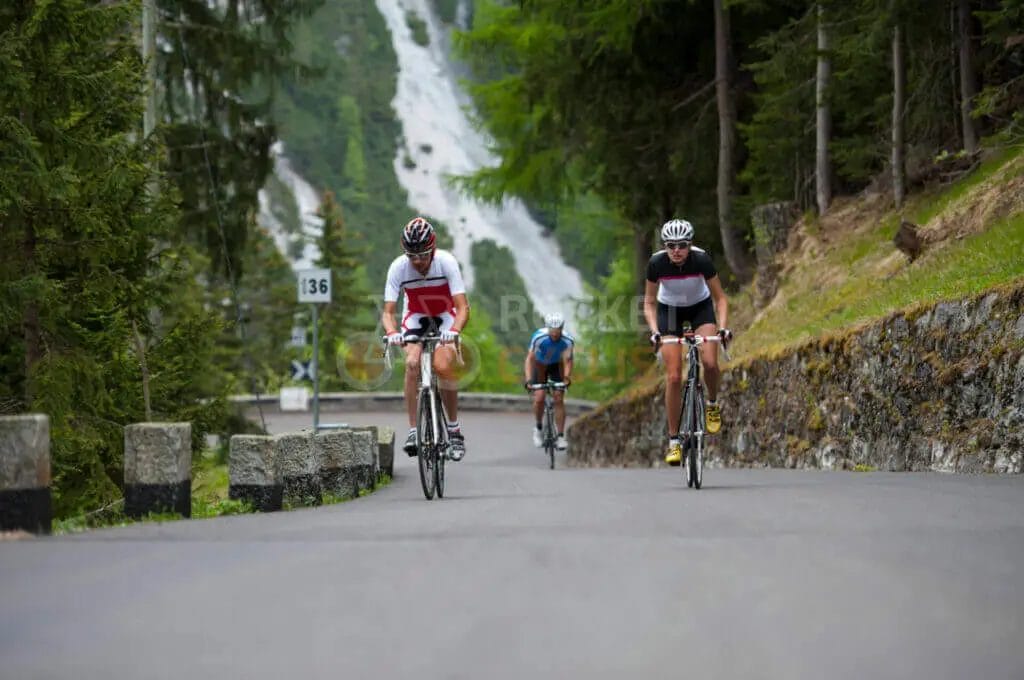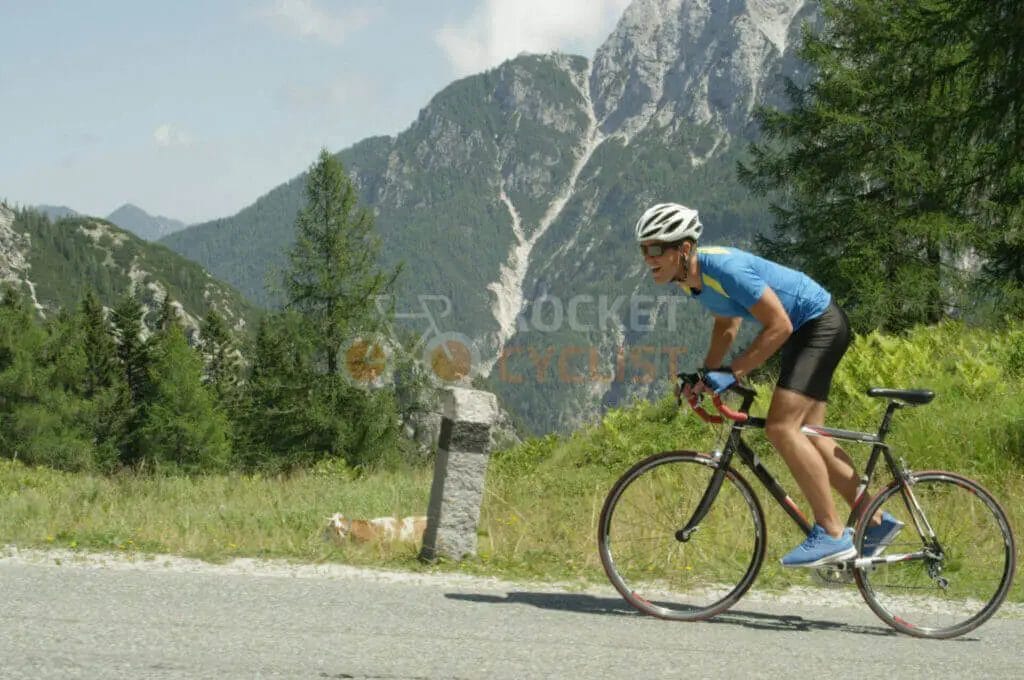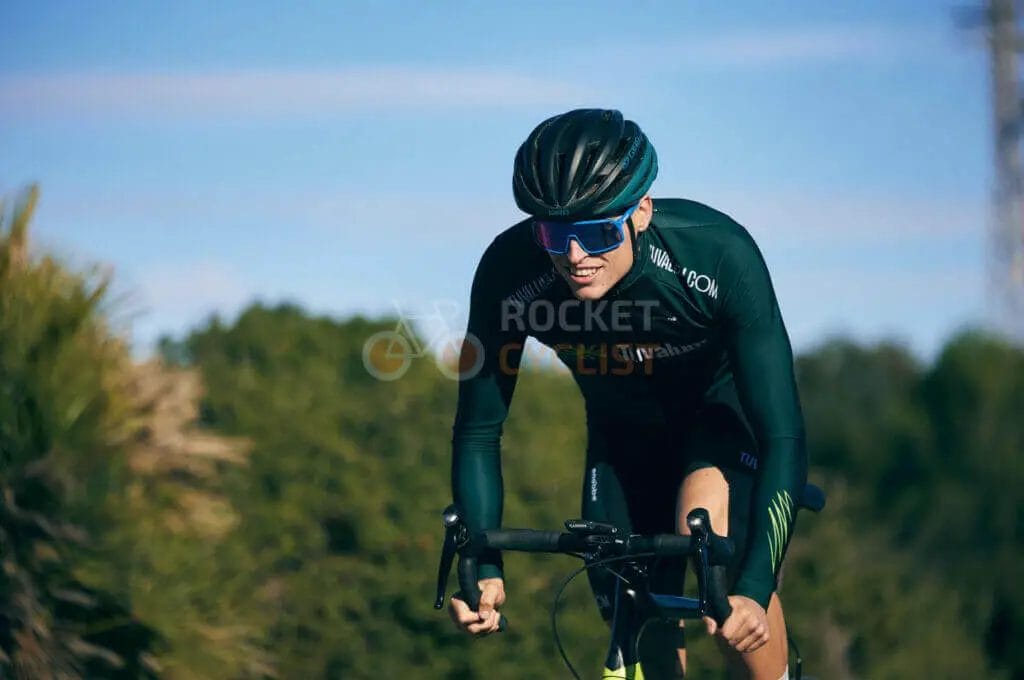Last Updated on March 29, 2024 by Vinson Lozano

Uphill climbs can be physically demanding and mentally challenging, but with the right techniques, you can overcome them with confidence. One key aspect that often gets overlooked is the importance of proper breathing strategies. The way you breathe can greatly impact your performance and endurance on uphill terrain. In this blog, we will explore various breathing techniques that can help you maximize your power, maintain pace, and optimize oxygen intake. By mastering these strategies, you’ll be able to tackle uphill challenges with ease and achieve your biking goals. So, let’s dive in and learn how to breathe for success on the uphill.
Overview of uphill challenges in biking

Uphill challenges in biking can be tough, both physically and mentally. When you encounter steep inclines, you’re faced with increased resistance and a higher demand for energy. Your muscles have to work harder to pedal, and your heart rate may rise rapidly. Uphill climbs require more power, endurance, and focus compared to flat terrains. The gradient of the uphill can vary, ranging from gentle slopes to steep, intimidating mountains. It’s important to approach these challenges with a determined mindset and a strategic plan. By implementing effective breathing techniques, you can optimize your oxygen intake, maintain pace, and conquer uphill challenges with confidence.
Importance of breathing strategies for conquering uphill challenges
Mastering breathing strategies is crucial for conquering uphill challenges on your bike. Proper breathing techniques not only optimize oxygen intake but also enhance your overall performance. Maintaining a steady supply of oxygen to your muscles allows them to work efficiently and reduces the risk of fatigue. By implementing deep belly breathing and nasal breathing, you can increase your lung capacity, improve endurance, and prevent breathlessness. Rhythmic breathing patterns help you maintain a consistent pace, while focusing on exhales facilitates efficient oxygen exchange. These strategies enable you to effectively manage your energy levels and keep your body relaxed during uphill climbs. By prioritizing your breathing, you’ll conquer challenges with ease and elevate your biking experience.
Understanding Proper Breathing Techniques

To conquer uphill challenges on your bike, it’s essential to understand proper breathing techniques. These techniques optimize oxygen intake and enhance your overall performance. One effective technique is deep belly breathing, where you focus on expanding your belly rather than shallow chest breathing. This technique increases lung capacity and allows for efficient oxygen exchange. Another beneficial technique is nasal breathing, where you inhale and exhale through your nose. Nasal breathing warms and filters the air, reducing the risk of breathlessness during uphill climbs. By practicing deep belly breathing and nasal breathing, you can improve endurance, prevent fatigue, and maximize your biking performance. Remember, mastering proper breathing techniques is key to conquering uphill challenges successfully.
Deep belly breathing technique
To optimize your breathing and enhance your performance during uphill challenges on your bike, it’s essential to practice the deep belly breathing technique. This technique involves focusing on expanding your belly as you inhale, rather than shallow chest breathing. By deepening your breath and engaging your diaphragm, you increase your lung capacity and allow for efficient oxygen exchange.
To practice deep belly breathing, follow these steps:
- Find a comfortable seated or standing position.
- Place one hand on your abdomen, just below your ribs.
- Inhale deeply through your nose, filling your belly with air and expanding it outward.
- Exhale fully through your mouth, allowing your belly to gradually deflate.
- Continue this pattern, inhaling deeply and exhaling fully, focusing on the expansion and contraction of your belly with each breath.
By incorporating deep belly breathing into your biking routine, you can improve your endurance, prevent fatigue, and conquer uphill challenges with ease.
Nasal breathing and its benefits for uphill biking

When conquering uphill challenges on your bike, nasal breathing can be a game-changer. Breathing through your nose, rather than your mouth, offers several benefits for uphill biking:
- Improved oxygen uptake: Nasal breathing filters, warms, and humidifies the air you breathe, allowing for more efficient oxygen uptake into your bloodstream.
- Better lung function: Breathing through your nose engages your diaphragm and uses your lungs to their full capacity. This can enhance your overall lung function and endurance during uphill climbs.
- Enhanced focus and relaxation: Nasal breathing activates the parasympathetic nervous system, promoting relaxation and reducing stress. This can help you stay focused, calm, and in control during challenging uphill sections.
By incorporating nasal breathing into your biking routine, you can optimize your performance and conquer uphill challenges with greater ease and efficiency.
Pre-ride Warm-up

Before tackling uphill challenges on your bike, it’s essential to warm up your body and prepare it for the intense effort ahead. Incorporating specific breathing exercises into your pre-ride warm-up can help optimize your breathing and improve your performance during uphill climbs.
Start by taking deep belly breaths, inhaling slowly through your nose and exhaling through your mouth. This will help expand your lungs and increase oxygen intake. Additionally, dynamic stretching exercises such as arm circles, leg swings, and torso twists can improve your lung capacity and enhance your breathing efficiency.
By incorporating these breathing exercises and dynamic stretches into your pre-ride warm-up routine, you’ll set a solid foundation for conquering uphill challenges with ease and efficiency. Remember, proper breathing is key to maximizing your uphill biking potential.
Breathing exercises to prepare your body for uphill challenges
Before tackling uphill challenges on your bike, it’s essential to warm up your body and prepare it for the intense effort ahead. Incorporating specific breathing exercises into your pre-ride warm-up can help optimize your breathing and improve your performance during uphill climbs.
Start by taking deep belly breaths, inhaling slowly through your nose and exhaling through your mouth. This will help expand your lungs and increase oxygen intake. Additionally, dynamic stretching exercises such as arm circles, leg swings, and torso twists can improve your lung capacity and enhance your breathing efficiency.
By incorporating these breathing exercises and dynamic stretches into your pre-ride warm-up routine, you’ll set a solid foundation for conquering uphill challenges with ease and efficiency. Remember, proper breathing is key to maximizing your uphill biking potential.
Dynamic stretching for improved breathing and performance
Dynamic stretching is a valuable component of your pre-ride warm-up routine that can greatly enhance your breathing and overall performance during uphill climbs. By incorporating dynamic stretches, you can increase the range of motion in your muscles and joints, allowing for smoother and more efficient movement on the bike.
Some dynamic stretching exercises that specifically target the muscles involved in breathing and biking include:
- Arm circles: Stand tall and extend your arms out to the sides. Begin making small circles with your arms, gradually increasing the size of the circles. This exercise loosens up your shoulders and chest muscles, promoting deeper breaths.
- Leg swings: Stand facing a wall or a sturdy object. Hold onto it for support and swing one leg forward and backward in a controlled manner. This exercise releases tension in the hips and improves flexibility in the lower body, facilitating better breathing mechanics.
- Torso twists: Stand with your feet hip-width apart and place your hands on your hips. Slowly rotate your torso to the right and then to the left, focusing on engaging your core muscles. This movement helps loosen up your spine and ribcage, allowing for easier expansion of your lungs.
Remember to perform these dynamic stretches in a controlled and fluid motion, aiming for a gentle stretch rather than pushing to the point of discomfort. By incorporating dynamic stretching into your warm-up routine, you can optimize your breathing capacity, increase your endurance, and ultimately conquer uphill challenges with greater ease.
Breathing Techniques During Uphill Climbs

When conquering uphill climbs on your bike, it’s crucial to use effective breathing techniques to optimize your performance. One technique to maintain pace and endurance is to establish a rhythmic breathing pattern. Find a breathing pattern that works for you, such as inhaling for a certain number of pedal strokes and exhaling for the same number. This consistency will help you maintain a steady flow of oxygen to your muscles. Additionally, focusing on exhales can optimize your oxygen intake. By fully exhaling with each breath, you create space in your lungs for a larger inhale of fresh oxygen. Practice these breathing techniques during uphill climbs, and you’ll notice increased control, endurance, and power in your rides.
Rhythmic breathing pattern for maintaining pace and endurance
To maintain a steady pace and endurance during uphill climbs on your bike, establishing a rhythmic breathing pattern is essential. Find a pattern that works for you, such as inhaling for a certain number of pedal strokes and exhaling for the same number. This consistency will help you maintain a steady flow of oxygen to your working muscles. By syncing your breath with your pedal strokes, you can establish a rhythm that keeps you in control and optimizes your performance. Practice this breathing technique during uphill climbs, and you’ll notice increased endurance and power in your rides. It’s all about finding your own rhythm and maintaining it throughout the challenge.
Focusing on exhales to optimize oxygen intake
When it comes to conquering uphill challenges on your bike, focusing on your exhales can play a crucial role in optimizing your oxygen intake. By emphasizing and controlling your exhales, you can effectively expel stale air from your lungs, making room for fresh oxygen-rich air to enter. This technique helps ensure a continuous flow of oxygen to your working muscles, enhancing your endurance and performance on uphill climbs. Remember to exhale fully and forcefully, allowing your breath to become a powerful tool in maximizing oxygen utilization. Practice this technique during your uphill rides, and you’ll notice an improvement in your ability to maintain a steady rhythm and power through challenging terrain.
Tips for Efficient Breathing on Uphill Terrain
When tackling uphill terrain on your bike, efficient breathing is key to maintaining your pace and endurance. Here are some tips to help you optimize your breathing on uphill climbs:
- Pace yourself: Start at a steady pace and adjust your breathing accordingly. Take deep breaths during flatter sections and exhale fully to expel stale air.
- Use rhythmic breathing: Establish a rhythm by inhaling for a certain number of pedal strokes, and then exhale for the same number. This helps maintain a consistent flow of oxygen to your muscles.
- Incorporate proper body positioning: Maintain an upright posture and avoid slouching. This allows your lungs to fully expand, maximizing oxygen intake.
- Stay relaxed: Tension in your body can restrict your breathing. Focus on staying relaxed and breathing deeply from your diaphragm.
- Stay hydrated: Proper hydration is essential for optimal oxygen delivery to your muscles. Drink plenty of water before your ride and during breaks.
By implementing these tips, you’ll improve your breathing efficiency and conquer uphill challenges more effectively.
Pacing yourself and adjusting breathing according to the intensity
When tackling uphill terrain on your bike, it’s crucial to pace yourself and adjust your breathing according to the intensity of the climb. By doing so, you’ll optimize your energy usage and maintain a consistent rhythm.
When facing a steep incline, it’s essential to take shorter, more frequent breaths to supply your muscles with the oxygen they need. As the intensity increases, focus on inhaling deeply and exhaling fully to expel stale air from your lungs. This will help maximize your oxygen intake and prevent fatigue.
Remember to listen to your body and adjust your pace accordingly. If you find yourself becoming out of breath, slow down and take a moment to regain your composure. By pacing yourself and adjusting your breathing, you’ll conquer uphill challenges more efficiently and enjoy a more enjoyable biking experience.
Incorporating proper body positioning for better breathing
To optimize your breathing while tackling uphill challenges on your bike, it’s crucial to incorporate proper body positioning. This will help you maintain good posture and open up your airways for better oxygen intake. Here are a few tips to keep in mind:
- Keep your back straight: Avoid slouching or hunching over. Keep your back straight, and engage your core muscles to support your posture.
- Relax your shoulders: Tension in your shoulders can restrict your breathing. Keep them relaxed and away from your ears.
- Bend your elbows: Allow your elbows to have a slight bend to maintain a comfortable position for your upper body.
- Open your chest: Lift and open your chest to expand your lung capacity and improve airflow.
By incorporating these body positioning techniques, you’ll create more space for your lungs to expand and breathe more efficiently while conquering uphill challenges on your bike.
Conclusion
In conclusion, mastering proper breathing strategies is crucial for conquering uphill challenges on your bike. By incorporating deep belly breathing, nasal breathing, and rhythmic breathing patterns, you can optimize your oxygen intake and maintain endurance during climbs. Pre-ride warm-up exercises and dynamic stretching can also help prepare your body for uphill challenges by opening up your airways and improving lung capacity. Additionally, focusing on pacing yourself and adjusting your breathing to match the intensity of the climb will allow for efficient oxygen utilization. Lastly, incorporating proper body positioning, such as keeping a straight back and relaxed shoulders, will further enhance your breathing efficiency. By implementing these techniques, you can improve your performance and enjoyment while tackling uphill terrain on your bike.
Benefits of mastering breathing strategies for conquering uphill challenges
Mastering breathing strategies for conquering uphill challenges on your bike offers numerous benefits that can greatly enhance your performance and overall biking experience. By incorporating proper breathing techniques, you can:
- Improve oxygen intake: Deep belly breathing and nasal breathing techniques optimize your oxygen intake, allowing you to maintain energy levels and endurance during climbs.
- Increase endurance: Rhythmic breathing patterns help maintain a consistent pace, preventing fatigue and allowing you to conquer longer climbs.
- Enhance focus and mental clarity: Focusing on your breath can help you stay present in the moment and improve your concentration, enabling you to tackle challenging uphill terrain with greater confidence.
- Reduce muscle tension: Proper breathing techniques encourage relaxation, reducing muscle tension and enhancing your ability to handle demanding climbs more efficiently.
- Boost overall performance: By maximizing oxygen utilization and maintaining optimal energy levels, mastering breathing strategies can significantly improve your overall biking performance on uphill challenges.
Incorporate these breathing techniques into your biking routine, and you’ll notice the difference in your uphill climbs.
Final tips and advice for implementing these techniques in your biking routine
To effectively incorporate these breathing techniques into your biking routine and conquer uphill challenges, consider the following tips and advice:
- Practice regularly: Like any skill, mastering breathing techniques requires practice. Incorporate these strategies into your regular training rides to become more comfortable and efficient.
- Start slow: If you’re new to these techniques, start with shorter, less intense uphill climbs. Gradually increase the difficulty and duration as you become more proficient.
- Stay focused: Concentrate on your breath during uphill climbs to maintain mental clarity and optimize your performance. Distracting thoughts can negatively impact your breathing rhythm.
- Listen to your body: Every rider is unique, so find the breathing pattern and technique that works best for you. Pay attention to any signs of discomfort or tension and adjust accordingly.
- Stay hydrated: Proper hydration is essential for optimal breathing and overall performance. Drink plenty of water before, during, and after your rides to keep your body functioning at its best.
By implementing these tips and consistently practicing your breathing techniques, you’ll be well on your way to conquering uphill challenges and improving your biking performance. So, hop on your bike, breathe deeply, and embrace those challenging climbs with confidence!


